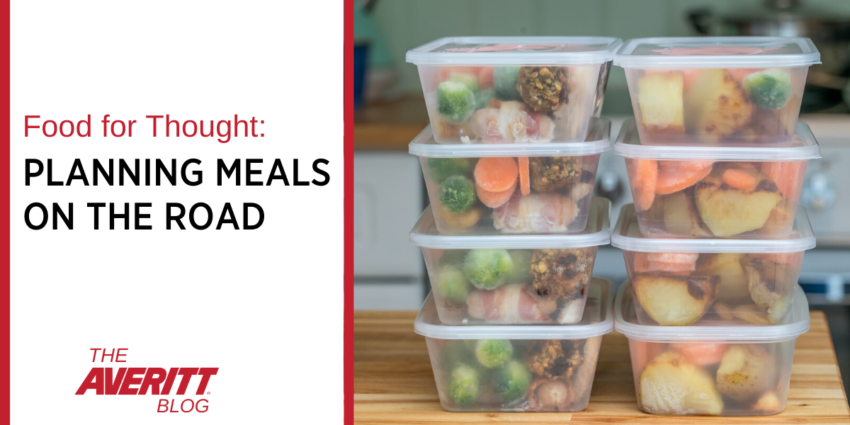
PLANNING MEALS ON THE ROAD
Post Date - Jul 1, 2020
Meal planning is one of the key components to eating healthy on the road as a truck driver. When you don’t have a solid plan going into your week, it’s easy to fall back into bad habits or grab whatever’s quickest - but not necessarily the healthiest - when you make a stop. Meal planning can sound overwhelming, but it doesn’t have to be. Jeff Langlois, one of our driving associates, is a rock star at meal planning and prep. We’d like to share some of his favorite meals and cooking tips.
“I was a driver back in 2012, but took some time off the road to work on the dock for several years to spend more time with my family,” he says. “When I first started driving, I put on a significant amount of weight and I got to the point when I knew I wasn’t healthy anymore. When I came back to driving a couple years ago, I decided I needed to figure out a way to do it better.”
One of the most common barriers to eating healthy on the road is space in the truck cab, both for storing food and for cooking equipment. Truck drivers don’t have a lot of space to work with, so it’s important to be intentional when choosing items you want to use. Some drivers may prefer a slow cooker like a Crock-Pot or Instant Pot to cook their meals. Others might want to use a microwave to reheat meals they’ve already prepared at home. For Jeff, his induction burner is a must-have item.
“I used to have a Crock-Pot a long time ago, but I got rid of it,” he explains. “I started using the induction burner and never used the Crock-Pot again. Once you figure out how to use that skillet, cooking in your truck is really easy.”
His new truck has a refrigerator built into the cab, but that’s one thing he hasn’t always had access to.

“Before I got this truck, all I had was a cooler,” he explains. “It just goes to show you that you don’t need big, fancy equipment to make this work. Having a refrigerator definitely gives me more flexibility, but I was still able to eat healthy on the road keeping everything in a cooler.”
One tip Jeff has for drivers is to limit prep time and storage space by cutting up vegetables at home.
“I used to bring a whole head of cabbage, whole zucchini, etc., and it took up a lot of space. They store much easier in Ziplock bags after they’ve been cut up and they’re so much easier to access.”
When it comes to sitting down and planning your meals for the week, the easiest thing to do is to choose your main dish or protein and then build the rest of the meal around it. For instance, if you decide you want stir fry one night, you can easily pair it with a grain or cauliflower rice, and a vegetable side.
“That’s exactly what I do,” says Jeff. “I usually sit down for 20-30 minutes each week for meal planning. I’ll say I’m going to have a steak on Wednesday, pork chops on Thursday, fish on Friday and then I’ll figure out what vegetables I want to go with the meal.”

It’s also helpful to keep breakfasts and lunches simple. For breakfast, choose quick and easy options such as oatmeal, smoothies, eggs and toast, or Greek yogurt and berries. The easiest lunches are often things that can be completely pre-made or quick to put together like lettuce wraps, tuna or chicken salad, or leftovers from the night before.
“You don’t have to make elaborate meals, just keep it simple,” Jeff adds. “You just have to realize that there’s more than fast food out there and there are options that are a lot better for you.”

If you need help with healthy meal planning, you can check out resources like ChooseMyPlate (https://www.choosemyplate.gov), EatingWell (http://www.eatingwell.com), and the American Heart Association (https://www.heart.org/en/healt...) for recipes, diet-specific planning tips and more information about healthy eating.